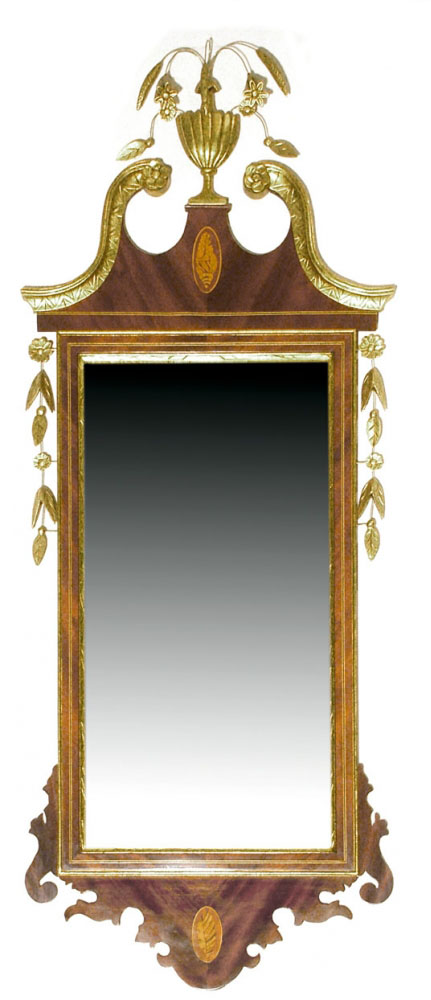Who We Are, How We're Wired
If you had only one word to describe SAPFM, then it would be ‘education’. We exist to promote the understanding, education, and appreciation of American Period Furniture. There is no other organization that promotes these goals, particularly in the context of the makers' movement.
SAPFM is organized as a volunteer run, non-profit educational organization. We assist the furniture maker to further their craft by locating resources and individuals with specialized expertise in period furniture. Our members include professionals and hobbyists alike. Not all are furniture makers. Some are furniture and tool collectors, museum curators, and historians.
There are many great resources available to gain equivalent knowledge, such as museums and books. However, SAPFM has a unique approach: we teach by building the very furniture so many collect, admire, and study. Nothing cements understanding quite like building it. No other woodworking organization can inspire its members to achieve perfection of the craft quite like SAPFM
Our mission has remained steadfast since our founding over 20 years ago:
- To create a forum for the understanding, education, and appreciation of American period furniture.
- To develop and encourage the use of standards and ethical practices in the reproduction and conservation of period furniture.
- To offer membership to all with an interest in period furniture.
- To assist members with the identification and location of resources including people or organizations having specialized expertise.
- To conduct public exhibitions for the recognition of members’ work.
Does the Niche Itch?
Not at all. At first glance our focus appears to be quite narrow, that is building furniture like our grandparents had to complement the dark wallpaper and heavy drapes in their homes. But that completely misses the point. It’s true, our focus is, and will continue to be, on the periods of American period furniture leading up to the industrial revolution. But not necessarily because of the style, though many of us enjoy that, but because of the skills required by the craftsman to execute these pieces. When machines and factories of the industrial revolution replaced the highly skilled makers, much of the art was lost. By then, making furniture on an assembly line became a soul sucking experience for workers.
We recognize that producing fine furniture of all periods, even up to the present day, requires highly skilled craftsmen. Early period furniture making requires a diverse array of skills including: joinery, veneering, marquetry, inlay, carving, turning, finishing, and upholstery. Though less extensively used in later periods, these skills are the basis for all furniture making. Master them, and there is nothing the maker cannot do. Like music, we know that the foundation of classical training transcends all styles.
Achieving this level of expertise is our wish for all SAPFM members. We realize it is a lifelong journey. Though some of the pieces may look complex, many of them are quite simple once they are broken down to their basic forms. Add a new skill with each successive build and soon sophisticated furniture pieces will be within reach. Many of our members belong to other woodworking organizations to learn specialties. Wood turning and carving are two prime examples. Although great pursuits, we believe that these are more of a niche pursuit than period furniture making.
We realize that formal furniture is not suited for everyday life. Many of us pursue high-style furniture for the sheer challenge of building and perfecting our craft. However, it should come as no surprise that many of our makers also build more casual furniture for their families when function over fashion and a more casual style is required. It’s not unusual to see Craftsman, Shaker, and the occasional Art Nouveau period pieces show up at chapter meetings as show-and-tell items and the occasional topic of a program. Although regarded as more ‘common’ furniture, these pieces are exceptional examples of their respective periods when built by a SAPFM maker.
What We Do, and Not Just on Weekends
We foster the craft of period furniture making using many different means.
- National events including our annual meeting at Colonial Williamsburg in January and our mid-year summer event.
- Local chapter events throughout the country.
- Hands-on workshops.
- Our periodicals including our annual American Period Furniture Journal and our quarterly Pins and Tails magazine.
- Online resources including our website, furniture making community forum, and social media.
- Member exhibits.
- Showcasing member-built pieces on our website gallery.
- Joint programs with museums and other organizations. These include Colonial Williamsburg, Winterthur, Museum of Early Southern Decorative Arts (MESDA), and Telfair Museum in Savannah, GA.
- Awarding the Cartouche Award annually. This is a lifetime achievement award for outstanding furniture makers. Think of it as the “Heisman Trophy” for period furniture makers.
- Members editorial contributions to publications such as Fine Woodworking and Popular Woodworking.
- Members teach at woodworking schools throughout the country.
- Educational grants.
Our History
Compared to the periods of furniture we build, SAPFM is much younger. The organization was founded in 2000 as a result of a small group of like-minded makers who met at a Colonial Williamsburg conference. Click HERE to read the full story.

